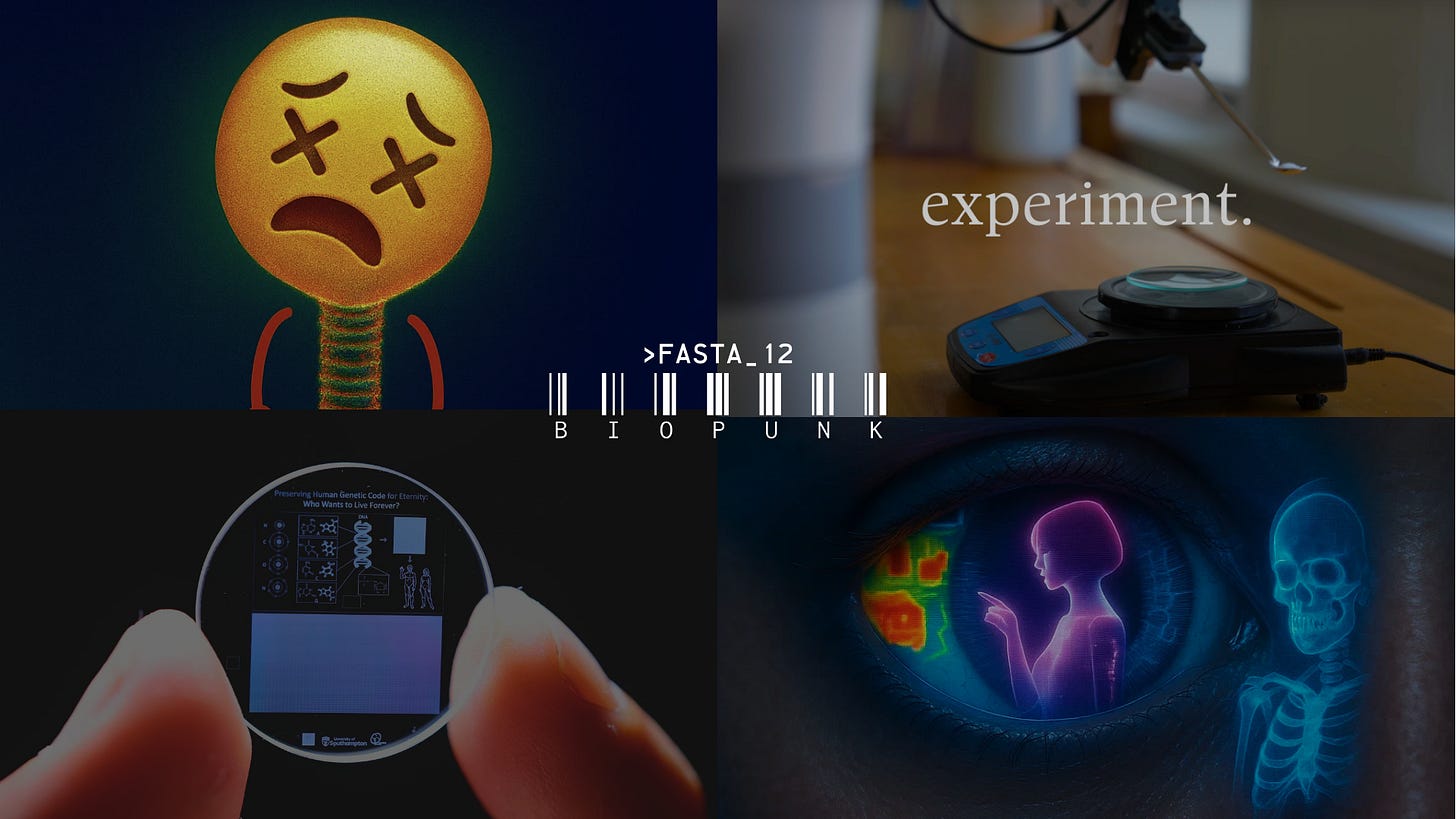>FASTA_12
The death of AAVs, from supervision to super-vision, ZeonSystems’ universal experiment automation, Helixworks’ 5D data storage, The First Declaration on Human Enhancement
>FASTA by Biopunk is weekly newsletter that sequences the the biotech ecosystem, faster 😉 | From the papers to the patents, from plants to algorithms, the funding news to celebrate and the ch11s to learn from, plus a biotech philosophical meditation as dessert | 5 mini stories, in less than 5 min.
The death of AAVs
How often do you think about the irony that behind every GMO created via AAVs, there’s another GMO that grows the AAVs? This involves a lot of time-consuming and expensive steps of cell expansion, lysing, purification, and quality control that lead to a low yield of 2×1011 vectors/mL vs the 1×1014 needed for treatment… not to mention the inherent payload limitations, and safety issues that have led to unfortunate patient deaths after recent trials.
Major gene therapy companies like Vertex, Takeda, and Pfizer have thus stepped away from AAV therapies in the past year…
Keep reading with a 7-day free trial
Subscribe to Biopunk to keep reading this post and get 7 days of free access to the full post archives.



